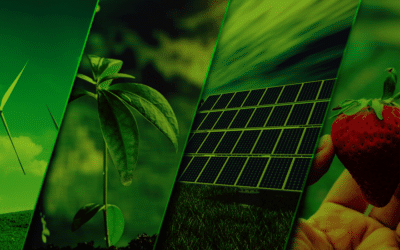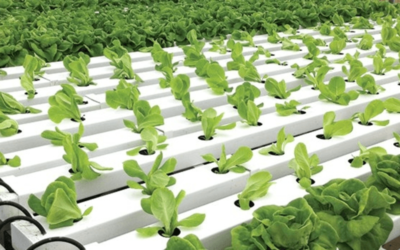

Video
Podcast
Transcript
Interview with Jonathan Heck, Kyasol Green Building Solutions
Title: Transcript of Interview with Jonathan Heck, Kyasol Green Building Solutions
Presented by: Emmanuel van der Meulen
Guest Speaker: Jonathan Heck
Date: 6th June 2017
Number of Speakers: 2
File Duration: 31:42
Transcriptionist: Jacqui Jonk
Link at the end of the transcript.
Transcript Break Down:
00:04 Introduction to Radio Live Green Smart.
00:56 What is rainwater harvesting?
02:25 Introduction to Kyasol Green Building Solutions
04:10 What is rainwater harvesting used for?
05:02 Is rainwater harvested as is safe for human consumption or does it need to be filtered?
07:17 How do you start harvesting rainwater?
09:22 What are the advantages/disadvantages of underground and above ground tanks?
11:25 Can you retrofit underground tanks?
13:14 Underground tanks require pumping, but require electricity, how does that play out?
16:36 What filters have you been referring to and what are they used for?
18:20 Can you give us some examples of where rainwater harvesting was implemented by yourself and by your company?
19:30 Do we harvest rainwater for other uses besides domestic?
20:13 What if the tanks are empty?
25:10 Can I switch from rainwater to municipal water manually for my tanks?
27:06 Summary of above vs underground tanks.
29:35 Ways to monitor the tank levels?
31:09 Wrap Up
00:04 Introduction to Radio Live Green Smart.
Emmanuel: Welcome to Radio Live Green Smart and our discussion on rainwater harvesting. I’m Emmanuel your host. Radio Live Green Smart is a forum to discuss green living, eco-conscious living; that’s the main crux. And then importantly to discuss where you see disrespect for the environment first hand bring, that disrespect to us and we will assist to find a way of addressing the disrespect. Use the contact us to report disrespect and please be clear with the information that you provide. Top
00:56 What is rainwater harvesting?
Tonight, we will be talking about rainwater harvesting which is the accumulation of rainwater for reuse at the residence rather than letting the rainwater runoff. Rainwater is collected from the roof and redirected via gravity to an underground reservoir or via downpipes from the roof directly from the gutters to a reservoir. Rainwater is used for various uses, in particular garden irrigation, flushing of toilets and for the washing machine. With further filtration of rainwater, it is safe to drink. Rainwater harvesting is one of the simplest and oldest methods of self-supply of water for households. Tonight, we have Jonathan Heck of Kyasol Building Solutions who will cover the topic in-depth from his point of view. Welcome Jonathan. Top
Jonathan: Hi Emmanuel, thanks for having me.
Emmanuel: [uh,uh] You’re welcome Jonathan and would you please introduce yourself and your company, Kyasol Green Building Solutions?
02:25 Introduction to Kyasol Green Building Solutions
Jonathan: Ok Emmanuel, Kyasol is basically, as you mentioned a green building solutions provider, we can touch a bit later on what divisions we take care of. At Kyasol I am the technical director and also a founding partner and my main responsibility is the water sector, mainly the rainwater harvesting, storm water management and waste water treatment.
Emmanuel: Ok, interesting and how did it start? How did Kyasol start and your passion for this [um] topic start?
Jonathan: Actually it’s quite interesting, my background is electrical engineering so [um], the other founding partner at Kyasol, I used to work for him and we worked on an automation level, building automation, industrial automation with a main aim of saving energy. And with one of our visits to Germany we came across this interesting rainwater concept with underground tanks and with South Africa not really leading the industry we need to look to our neighbours, like Australia, Germany and Europe for innovative solutions and we came across this concept [um] with a few discussions back and forward we then started importing the products and in 2010 we became the partner locally for that. So, the rainwater section started off by coming across something at an expo just by accident not really, South Africa didn’t have a need for it but soon developed a need for it when we started just maybe a year or two afterwards. Top
04:10 What is rainwater harvesting used for?
Emmanuel: Thank you Jonathan, the next interesting topic for me is what is rainwater harvesting and what is the water used for from your vantage point what is it being used for?
Jonathan: Well as you say, rainwater collected off roofs and surfaces, ideally roofs cause there’s less contaminants there and then that rainwater can be used as is without further disinfection or treatment in areas such as irrigation, cleaning of cars, washing and cleaning indoors and outdoors flushing toilets, even laundry, everything basically, except hygienic and consumption like cooking and drinking but you can also filter it to a further extent and replace that. Top
05:02 Is rainwater harvested as is safe for human consumption or does it need to be filtered?
Emmanuel: Does that mean that rainwater, as it is harvested it’s not safe for [consump] for human consumption, but with filtration it is?
Jonathan: Yeah, for sure, look on the roof there could be contaminants like bird droppings or dead animals or maybe carbon from car exhausts that came down with the rain, even metal and paint contaminants. So all of those small contaminants, which is not something that can make the water fall over but [it,it] it’s maybe not something that is hygienically healthy if you wash for instance your eyes or your face or use it in your cooking or your consumption so yeah you could install filters, sediment filters and disinfectants methods like UV or ozone to get that water to that extent, it’s definitely possible it’s just a question of whether it’s feasible to do it.
Emmanuel: Ok, when you say feasible, in other words is it cost effective to go to that extra extent when there’s enough other uses for the rainwater?
Jonathan: Yeah, look with filters there’s obviously maintenance involved so [um] there’s frequent replacing of filters that’s required depending on the contamination of filters. There’s also a power consumption factor to it [uh] ozone and UV both use power to disinfect the water, although very small. You need to consider the fact that you are getting rainwater for free, [um] now you need to spend maintenance and electricity on it.
Emmanuel: Ok
Jonathan: So, I would say of you not in an area that’s not water scarce then maybe use it on order to save on drinking water supply, but if you in an area where there’s very little resources then obviously cost of treatment and maintenance is not a question, you go to the full extent.
Emmanuel: Ok, so I get what you saying it’s horses for courses?
Jonathan: Yes, for sure. Top
07:17 How do you start harvesting rainwater?
Emmanuel: Thank you. Ok so now the question or the angle that I am coming to now is how do we start, how do we decide how and where to harvest how does one figure out that you want to start and any information you want to give listeners about that topic?
Jonathan: Yes, obviously the main thing is identifying whether it’s possible or feasible. Mainly the roof area, if you have a large roof area the more you can collect. [um] obviously location is also important, if it is desert area, every drop counts so you can still do it but um but if you start looking at a feasibility point of view then maybe good rainfall areas, big roof spaces are ideal. As a first prize, you would want to collect off the roof, less contaminants on the roof, you could also collect water from the surfaces. The surfaces also have exposure to oil fumes, chemicals, [um] excessive silt from gardens and that type of thing so it requires more filters to put in place in order for your storage tank not to build up over time and require more maintenance.
Emmanuel: So, does that mean water is collected from the downpipes if it’s from the roof?
Jonathan: Yes, yeah so it’s obviously important that your roof has a downpipe and a gutter structure, if you have something like a thatch roof its obviously more difficult to do that so via your gutters down the pipe into either an above ground storage tank or underground storage tanks. Top
09:22 What are the advantages/disadvantages of underground and above ground tanks?
Emmanuel: Yeah, that’s very interesting, now can you tell us about, now that you’ve mentioned above and underground what are the advantages or disadvantages of either the above or underground tanks?
Jonathan: Ok, I’ll start with the above ground tanks first [um] the above ground tanks are quite simple to put in place so you can imagine standing next to the building and a down pipe coming down the wall, you can basically put your tank under the down pipe just with a screen filter at the top of the tank so very [straightforwardly] and [inexpensibly] you could collect that water. The downside to above ground tanks is it’s not always possible to put it where your big collection points are. So, in the front of house you don’t want this tank due to aesthetics and maybe space reasons and that type of thing, so it becomes difficult to collect the maximum amount of roof area with above ground tanks and you need to be close to the downpipe as it works with gravity. S,o you can just imagine having 6/7 tanks around the house at each downpipe, it can become quite a problem and quite ugly as well. If we look at the underground section, the underground tank obviously cost a little bit more to put in place as you need to excavate to put the tank underground so the main advantage here is that you can bring your downpipes to the underground network and then gravity helps it flow to the lowest point of your property and you can collect the whole roof in 1 reservoir you have 1 filter point and 1 pumping point whereas if you have multiple above ground tanks you have multiple filter points and multiple pumping points so you can see there’s pros and cons on each concept. Top
11:25 Can you retrofit underground tanks?
Emmanuel: Yeah, now so [so] would you be able to retrofit underground tanks, the property is already built and I now want to harvest rainwater would that be a consideration at all or is it just not cost effective to do it after the event, and I am thinking about the downpipes, the collection and then the placing of the tanks etc. is that something people would be interested in?
Jonathan: Yeah, I would say a general thumb suck…
Jonathan is lost for a few seconds due to technical error.
Jonathan: I will just repeat that, I would say about 30% of existing houses has the possibility to do underground tanks the other 70% is more difficult due to paving around the house, well established gardens and features that need to be lifted and then it’s not feasible at all or maybe even practical.
Emmanuel: Ok, so from that I gather that the majority of rainwater harvesting with underground is done from the design of the house from [from] the architect, from that point. Is that usually the case?
Jonathan: Yeah, definitely more cost effective when you look at the holistic project so that when you design it in and the building takes place this type of thing is allowed for. Obviously as you know everything that’s retrofit comes with a price tag because you need to make it work. Top
13:14 Underground tanks require pumping, but require electricity, how does that play out?
Emmanuel: I understand. Jonathan then going to the next topic [um] if I formulate the question like this: when do we install underground and when above ground taking into account that the underground tanks require pumping the water, the above ground tanks don’t necessarily require pumping and now we have free water but we require electricity to pump what is your comment and so on. How does that play out?
Jonathan: Ok I’m just going to touch on the design and then I’ll go to the pumping topic.
Emmanuel: Thank You.
Jonathan: On the design, obviously if you build a new house and you could get your roofs to fall to central positions, strategic positions then above ground makes more sense. You can hide it through screen walls but then you have to plan it like that. Generally speaking, people don’t plan it like that, it’s more about the aesthetics of the roof then practicality of the roof which is a mindset thing I believe. If your roof is not ideally orientated to take most of your water to 1 point then you would need to go underground to get that structure around the house to a central point. [um] considering the fact that you need to pump water to the tanks, if you above ground you have gravity on an above ground level you can fill a bucket or you can maybe drip irrigate or do a simple run off but if you going to plumb into an irrigation system or into a plumbing system like a toilet or washing machine, you need pressure. So, whether you above ground or underground with the storage you need to pump in order to have that pressure on your irrigation system so I wouldn’t say that is a deal breaker, the pumping side of it seeing that you have free water that came off the roof you could spend a bit of money on pumping the water to the points that you need it.
Emmanuel: Understood, yeah, I understand. So, I gather now that to have above ground and to have all your drainage to a single point means you will have to design your house like that whereas with underground the design can follow the original plan and then all you need to cater for is how you get from the different places around the property to get the water to the underground tank. Did I understand you?
Jonathan: Yes you 100% correct, the building stages you obviously put in a water supply around the house, you obviously put a sewage system around the house so whilst these trenches are open you just put the additional piping in to bring the rain water to a central point so yeah it is carefully planned but practically possible. Top
16:36 What filters have you been referring to and what are they used for?
Emmanuel: Understood. Earlier on you mentioned filters, [uh] what filters are you referring to and what are the filters used for?
Jonathan: Well as a first step seeing water come off the roof you need to screen filter so we just call this our screen filter or our sediment filter. This is generally a stainless-steel screen either in the underground tank or on the man hole inlet of the above ground tank and this is just to prevent leaves or dead animals or solid particles to settle in the tank. If these particles enter your tank, it’s not a problem as such but it could start water falling over quicker through some rotten material or excessive build up as it needs frequent cleaning so we do a filter before we go to the tank to prevent sediments from settling into the tank. From that stage, you need to decide what you want to do with the water. If you want it to just go to the irrigation then no other filters are required depending on your irrigation points if you have small drippers or pop up sprinklers then you’ll obviously have to put something in place there but if you going to go back into the building for toilets we recommend a fine micron filter and this filter makes sure that all the dissolved dust or carbon in the water that’s not visually seen is encaptured so as not to affect the plumbing internally which is more difficult to maintain. Top
18:20 Can you give us some examples of where rainwater harvesting was implemented by yourself and by your company?
Emmanuel: I understand, Jonathan if we take it a step further where all, can you give us some examples of where rainwater harvesting was implemented by yourself and by your company?
Jonathan: Well typically residential buildings either retrofit on existing residential buildings and then a lot of the new buildings of the state that’s going up in and around Gauteng and South Africa, regions like Cape Town, Durban, Joberg and Pretoria. We have also done commercial buildings, office space, office developments where we use the water for urinals and toilet flushing. We’ve done service stations around the country also for urinals, toilet flushing and irrigation and in warehousing or logistics where there’s big roofs but not much internal consumption but then there’s washing of vehicles and this type of thing where we use rainwater to supplement. [um] I did the municipal water, all the recovered water for those washing bays. Top
19:30 Do we harvest rainwater for other uses besides domestic?
Emmanuel: So that means that we don’t only harvest rainwater for domestic purposes or for residential but offices, industrial, everywhere?
Jonathan: Yes, that’s correct, if you look at it, let’s use an office for an example. If you look at it there’s no washing and showering that happens at the office so where’s the water going to? It’s either coffee machines or handwashing or toilet flushing so a lot of the water used in an office environment is actually flushed down the drain and this is drinking water that we flush down the drain so replacing this with rainwater makes perfect sense. Top
20:13 What if the tanks are empty?
Emmanuel: I am beginning to see the bigger picture [um] that it’s not just for residents and so on. Now in terms of water when the rain out of the rainy season obviously the tanks will not last until the next rainy season, now what happens then if I’ve plumbed irrigation and the toilets into the rainwater tank but now the tank is empty?
Jonathan: Ok, yeah no, interesting question. If you in an area with good rainfall you could design a system to carry you through the dry season and there’s factors like is there frequent rain? Do you have enough roof space and is it feasible to do? I mean to design a storage that could last you 2/4 months in terms of the initial capital outlay and what you are benefiting and if that tank would ever be full is the question. So, we don’t go through the winter season, we try to harvest as much as we can in the rainy season and supplement using less from the grid so that also the infrastructure, the local dams and local facilities also have enough capacity for the dry periods. [um] in the situation that your tank is empty you have two options there. Either municipal switch over, so this is a direct switch over so if the tank is empty you allow municipal pressure to directly flow to the building, that is your first option. Your other option is to top your tank up with municipal water, so let’s say for instance you keep your tank at a 30% level so it means the whole dry season you’ll always have 30% in your tank topped up by a municipal supply if there’s no rainwater.
Emmanuel: So, what then happens if I understand you, is the water it keeps on filling let’s say as you mentioned to 30% of the tanks capacity and it then keeps on servicing the irrigation, the toilets etc from the tank as 1 option or alternatively when the tank doesn’t have water it will just bypass the tank and pump straight into the house or where its used for the irrigation?
Jonathan: Yes, that’s correct, but I just want to touch on something [uh] some positives and negatives around that. Let’s take the first one as an example. Let’s say [we] the tank is empty and we switch over to municipal supply on demand which means you stop pumping rainwater and the municipal supply goes directly to the building. Now the advantage there is that you don’t require a pump to pump water as municipal water already arrives at pressure so there’s no need to pump to get the pressure so you can basically switch directly over. The negative with this is, if there’s a water outage, let’s say there’s maintenance on a pipe somewhere then you without water so this brings me to the second possibility, instead of switching direct on demand to municipal when the tank is empty, you use the municipal to top up the tank to that 30% level in this example. The negative aspect is that you will always pump to your toilets and irrigation there’s never a straight municipal feed, there’s always a pumping feed so there’s always power consumption on the pump. The advantage though is that you always have reserve supply so if there’s a burst pipe or whatever the case may be you always have reserve in your tank to continue operating.
Emmanuel: Yes, for instance we’ve just been notified that we will be without water over a 2-day period, so if we were using, [um] the keeping water in the tank [uh] we won’t be without water for that period otherwise we would be that’s how the pros and cons would be as how you refer to it?
Jonathan: Yes, effectively you creating a rainwater harvesting system and a water back up system in 1. Top
25:10 Can I switch from rainwater to municipal water manually for my tanks?
Emmanuel: I understand, oh, that’s very interesting. Jonathan assuming now the rainwater has run out and now I need municipal water is this something that I have to walk out and manually switch, when I realise there’s no water over from [um] the one medium to the other medium? Is it manual or how does that work?
Jonathan: Yeah, well there’s a couple of options [um] obviously if you go old school and put a tank under a downpipe when its empty its empty, that’s a very feasible or cheap way of harvesting water. But as soon as you start looking at it in a professional manner and you start plumbing up toilets and laundry and irrigation, a lot of things around the house you need a more professional solution so obviously as soon as the tank is empty you need water to run to the toilets, you can’t in the middle of the night at 11 o clock go outside and switch over to municipal manually in order to fill the toilet so [um] again different strokes for different folks, if this is what you want to do then for sure but we do have an option of an automatic switch over device so basically what happens is if the tank is empty the pump switches off and there’s no constant pressure from the pump. In case of a power outage when there’s no power to pump it will switch over to municipal supply so even during power outages, pump failures or empty tanks you will have the backup supply of the municipal and that automatically happens that’s an automatic switch over. Top
27:06 Summary of above vs underground tanks.
Emmanuel: Yeah, that makes it very convenient. [um] Jonathan so is there anything else that you would like to tell us about the that we haven’t covered now anything else anything further that you would like to tell us about rainwater harvesting?
Jonathan: Yeah, the one thing that crosses my mind now thinking about it just back to the above ground and underground we know that obviously the above ground is a little bit cheaper to implement. Underground is more practical in terms of collecting from the roof. Advantages for the underground tank is obviously aesthetics you save space in the garden, also your water when stored underground you can keep it for longer periods because there’s no sunlight, no temperature or not high temperature and therefore very little growth or very slow growth so that’s one advantage I want to add above vs underground. And then something else that I just want to touch on as well is, we talked about making the system professional and have an automatic switch over, we also have automatic filters where the filters backwash themselves so there’s no need for you to go and clean the filters yourself. It’s on a schedule and rinses once a week or once every 2 weeks depending on how bad your contamination is and that’s a self-cleaning automatic solution.
Emmanuel: Yeah, it certainly sounds as if rainwater harvesting has caught up with all the conveniences that we need.
Jonathan: Yeah, no definitely these days it’s the norm you need to create time for family and create time for work and if you live on a farm and you have time to clean the filters and switch over water supplies then for sure but if you live in the cities and there are high demands you don’t have time for these things.
Emmanuel: Yeah, so it becomes part of the household and it just flows either from municipal or from the tank itself.
Jonathan: Yeah, that’s the intention, yes. Top
29:35 Ways to monitor the tank levels?
Emmanuel: Very interesting. Jonathan if that is the end of it then thank you very [very] much, unless you have some last-minute thoughts?
Jonathan: On that last topic on making it convenient, there’s also other tools that you can implement on this tank or this concept and it’s something like level monitoring in the tank. A lot of times the tank is outside or underground or not seen every day so you would want to know what the level is so there are simple devices that could give you like a gauge or display that shows you the level, but there’s also automation components. Just if I can touch quickly on the automation stuff so you monitor the level of the tank and then you can create graphs where you can see how frequently does it rain? How much did the tank increase in terms of percentage of approximate litre value? You can also then see from your graphs if your filters are actually clean or is your pump actually pumping and you can also set schedules or priorities so if your tank increased by x % you could run the toilets or the irrigation I mean, in drier seasons you could reduce the irrigation cycles and it just gives you a little more flexibility and control through that, through a tool like that. Top
31:09 Wrap Up
Emmauel: Definitely and that makes it even more convenient. [um] thank you Jonathan. So that concludes our discussion with Jonathan Heck of Kyasol Green Building Solutions. Please note that where we interview or run adverts, the content is not necessarily endorsed by Radio Live Green Smart. I am Emmanuel your host and over to the music. Top
Link:
End of Transcript Top








